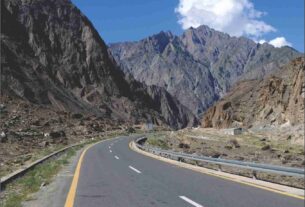Increasing role of unmanned armoured vehicles
Militaries around the world are looking for ways to introduce armoured unmanned ground vehicles to protect the soldier from boobytraps and improvised explosive devices (IED) and the increasing possibility of a chemical, biological, radiation and nuclear (CBRN) threat to ground forces. The experience of Iraq and Afghanistan is beginning to percolate into military establishments that have begun to realize that preventing manpower attrition could have a more direct effect in the successful outcome of a battle.
The US and its allies have introduced well-protected unmanned ground vehicles in Afghanistan and China has announced that it is working on creating unmanned tanks and support vehicles. For a nation that has never been overly protective of its manpower, believing instead in “human wave tactics” to overwhelm the enemy, China clearly is preparing for the Fourth Generation Warfare in a nuclearised environment along the area of its growing interest-the Pakistan-Afghanistan salient. India too is experimenting with greater maneuverability and protection in its armoured columns.
Modern tanks
There is thus a need to clarify the difference between “armed” and “armoured” ground vehicles. A modern tank is both. The rationale for removing the crew from such a vehicle is to save lives, increase situational awareness, avoid IEDs and introduce ways of destroying them without damage to oneself.
Moreover, the command and control will in any case have to be carried out by a joystick manager positioned well outside the battlefield with adequate satellite oversight. A careful reading of the reviews of the deployment of unmanned ground vehicles tends to overemphasis the ability to reduce the workload (weight carrying) and logistics support to the fighting man on the frontline rather than make contribution to victory by brute force represented by armoured tanks. The detection and destruction of roadside bombs and IEDs can be left to instruments like the Indian Daksh remotely operated vehicle which incidentally is also armed with a shotgun to either shoot down hidden terrorists or blast open doors and barriers in its path.
The Indian experience of the use of “mine-protected vehicles” is significant. The vehicle is armoured along its underbelly but there is sufficient evidence to show that after the manual’s recommended limit of 15kg of explosive is crossed, the vehicle suffers extensive damage not only to its undercarriage but also to the armed personnel it is designed to carry safely into and out of a battlezone. The Left Wing extremists found its Achilles heel almost immediately on its deployment after it was acquired from a South African firm. They began packing their anti-vehicle IEDs with as much as 50kg of explosives. The effect on the so-called “mine protected vehicle” has been devastating.
The continued relevance of the crew in armoured vehicles becomes self-evident when it is stated that these robots can enter the battlezone and pinpoint the location of the enemy, the intended ambush and the hidden minefields/improvised explosive devices. In the context of this kind of mission it is more important that the remotely operated vehicle is ‘armoured’ as well as ‘armed’ to protect itself from small arms fire and to retaliate if necessary. But here too, as in the case of tanks, the ubiquitous rocket propelled grenade (now a widespread feature in all conflicts) could be the force majeur.
It is necessary to understand whether the tank crew is to be replaced by computers purely to save human lives; there is no guarantee that the tank itself will be immune to the dangers of the battlefield. Time and again it has been demonstrated that the crew has managed to retrieve a damaged tank or moved it out of harm’s way if it is not totally disabled. The one advantage that is obvious if the crew is removed from an armoured vehicle is that additional armour equal to the weight of the crew can be appliquéd onto the exterior in the form of explosive reactive armour. This again would depend on how much horsepower the engine produces.
In a CBRN situation there is always the possibility that the nuclear blast and radiation effect will immediately destroy the electronic connectivity between Headquarters and forces in situ by what is known as an electromagnetic pulse (EMP). In that situation can an unmanned combat vehicle be able to move let alone operate as a system will remain a moot point till it is tested in actual nuclear conditions.
Safety and firepower
The safety and cohesiveness of an armoured regiment is largely dependent on the firepower of the enemy. And, of course, the tactics employed in engagement as illustrated so well in the Battle of Asal Uttar in Punjab in 1965 when the better armed and armoured Patton tanks became victims of their own alleged invincibility. However, there needs to be a clear distinction between the role and capabilities of “unmanned armoured vehicles” and remotely operated vehicles. The first, from the very first day of its creation has been used to instill shock and awe in the enemy by being agile even while clothed in armour immune or resistant to the firepower available to the enemy.
Electronically it would appear possible to install in an off-the-armory battle tank the gismos required to replace the commander, the gun crew and the driver. If this is achieved in a failsafe manner it would mean that the main battle tank as a system should be able to operate, by remote control, using satellite technology. It is said that the Americans and their allies have tested unmanned combat vehicles in battlefield conditions in Afghanistan and Iraq.
Some years ago the Lockheed Martin Squad Mission Support System (SMSS) deployed its unmanned transport and logistical support for light, early entry and special operations forces. What it did was lightening the soldier’s load and serving as a power management resource for self-sustaining, portable power solution, including soldier battery recharge and logistics support for infantry.
Lockheed has demonstrated the capability to control the SMSS robotic vehicle beyond line of sight. During demonstration the SMSS was controlled via satellite link 200 miles away. The robotic vehicle conducted several battlefield surveillance operations while being controlled via satellite. The demonstration proved that the combination of autonomy, vehicle mobility, surveillance sensors and satellite communications can provide a means of battlefield situational awareness while keeping soldiers out of harm’s way. During the demonstration, SMSS was equipped with a Gyrocam 9M Tactical Surveillance Sensor and a General Dynamics SATCOM Technologies “SATCOM-On-the-Move” system. But the thought remains that all this was done under conventional circumstances and not in a CBRN environment.
India has also been experimenting with robotics with the help of Combat Vehicles Research & Development Establishment (CVRDE), a DRDO lab based at Avadi near Chennai. India has over the years been demonstrating at various defence expositions its MUNTRA series of unmanned ground vehicles for deployment for NBC reconnaissance and mine detection capabilities. MUNTRA is an acronym for Mission UNmanned TRAcked comprising four vehicles, with three in the unmanned role and the fourth (Muntra-B) retained in a manned mode, doing the base control duties.
Muntra-S has been tested in very high temperatures in deserts. Muntra-S has demonstrated a tele-operating capability of operating a tank out to 12 km while its radar had a range of 18 km. The MUNTRAs have been built around the proven BMP-II infantry combat vehicle.
To be able to field an unmanned tank regiment in an NBC environment from outside the Electromagnetic Pulse effect is still some years away.




